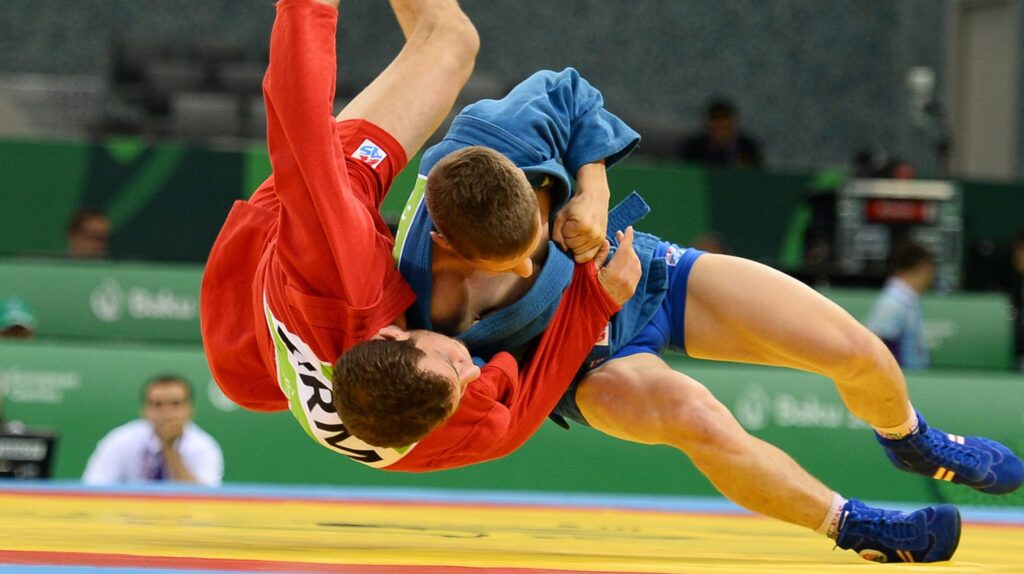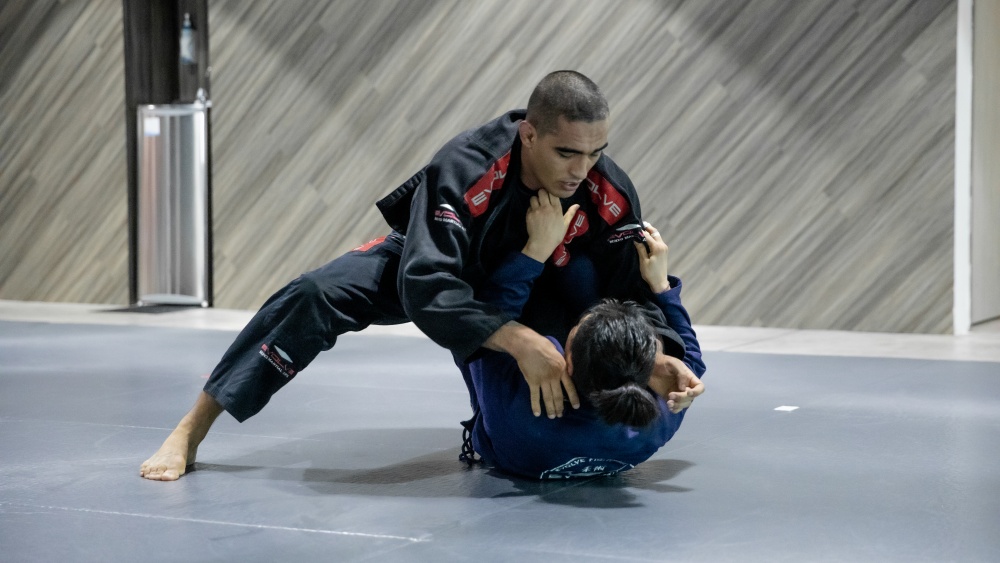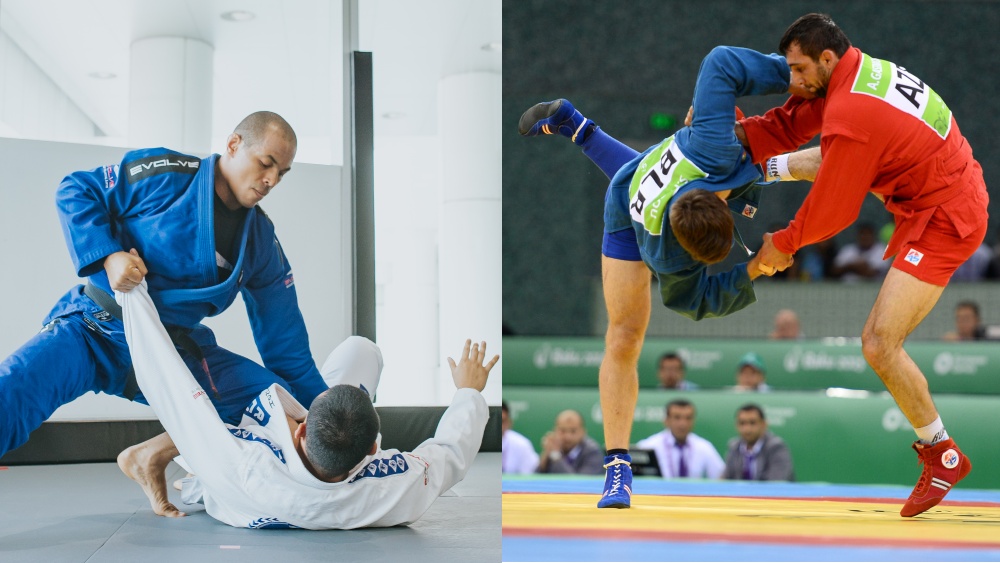Sambo and Brazilian Jiu-Jitsu are two of the best bases you could choose for mixed martial arts. Both martial arts are also effective self-defense systems.
BJJ is a derivative of Jiu-Jitsu that was developed by the Gracie family. It dominated the early days of mixed martial arts, with Royce Gracie winning three of the first four Ultimate Fighting Championship tournaments. It is a ground fighting system that specializes in submitting opponents with joint locks and chokes.
On the other hand, Sambo is a fighting system developed by the Russian military. It is a fast-paced fighting style that emphasizes fast submission, ground fighting, and effective throws. Strikes are allowed in Sambo, making it a more realistic fighting style.
However, Sambo covering more aspects of fighting than BJJ doesn’t necessarily make it a more effective martial art. The truth is neither style is better than the other. Both have their strengths and weaknesses, so it comes down to your training goals. This article will explore the similarities and differences between Sambo and BJJ.
Sambo Vs. BJJ
Let’s take a closer look at both martial arts to get a clearer understanding of their pros and cons:
1) Sambo
Sambo was developed in the 1920s by the Russian military as a hand-to-hand fighting system for soldiers. It incorporates the most effective techniques from other martial arts like boxing, Jiu-Jitsu, wrestling, Judo, and many other combat styles. It’s a practical fighting style that doesn’t waste time on fancy techniques.
Sambo can be broken up into the two popular forms practiced today: combat and sport Sambo. Sport sambo is very similar to Judo, as it uses many of the same throws. However, there’s a more significant emphasis on ground fighting, including pins, leg locks, and joint locks. Strikes are not allowed, and neither are chokes.
Combat Sambo is a more comprehensive style that resembles mixed martial arts. Kicks, punches, elbows, and knees are all permitted. Throws, wrestling-style takedowns, and joint locks are allowed. Techniques that are typically deemed illegal in most sports, like headbutts and soccer kicks on grounded opponents, are sometimes allowed in combat Sambo.
2) BJJ
Brazilian Jiu-Jitsu is undoubtedly one of the best systems specializing in ground fighting and grappling. Fighters from BJJ backgrounds dominated the early days of mixed martial arts and remain a force to be reckoned with in modern MMA.
The fighting style was developed by judokas Helio and Carlos Gracie, who modified judo techniques to create a unique fighting style that focuses on ground fighting and submissions. BJJ is arguably the most effective martial art smaller fighters can use to defeat much larger opponents. Royce Gracie was typically at least 50 pounds lighter than his opponents in the early days of MMA, yet he dominated all of them.
From strikers to wrestlers, no one had any solution for BJJ fighters during the early days of MMA. Fighters from other combat styles were forced to train in BJJ to have a chance at defending themselves against its many submissions.
The Main Differences Between BJJ And Sambo
Sambo and BJJ share many techniques like Judo throws and joint locks. However, there are key differences between the two sports, from the outfits practitioners train in, the rules of the sport versions, and the ground positions that are allowed.
Some of the main differences between BJJ and Sambo include:
- Combat Sambo allows punches, elbows, kicks, and knees, while all strikes are forbidden in BJJ. However, combat BJJ is gaining some popularity these days, and it allows the use of open-handed strikes.
- BJJ emphasizes getting dominant positions and finishing opponents with joint locks and chokes, while Sambo focuses on pins and joint locks.
- Sport Sambo allows all students to use leg locks, while BJJ reserves such techniques only for advanced students.
- Sport and combat Sambo do not allow for extensive use of the guard since fighting off your back is frowned upon. Sambo fighters are expected to look for ways to get back to their feet or a top position when they find themselves on their backs, while BJJ specializes in fighting in your guard.
- BJJ’s curriculum is significantly more extensive when it comes to ground fighting. Sambo fighters are familiar with ground fighting, but they don’t specialize in it to the extent BJJ fighters do.
- BJJ students train while wearing a gi, while Sambo students wear uniforms called Kurtka or Sambovka. The top of the Kurtka is much like the top of a Judo gi, with compression-style wrestling bottoms. BJJ fighters also train without the gi, wearing athletic-style gear or simple shorts and a T-shirt.
- Fighters at sport BJJ tournaments typically score points for takedowns, sweeps, transitions, and guard passes. A submission ends the fight at any moment. Sport Sambo fighters earn points for knockdowns, throws, and pins. Sambo matches come to an end when a fighter gets a 12-point lead, scores a perfect throw, forces a submission via a joint lock, or has more points at the end of the match.
Which Is Better For Mixed Martial Arts?
Sambo and BJJ are equally effective for mixed martial arts. Combat Sambo practitioners might have a slight edge over BJJ players since they already know how to defend against punches, kicks, elbows, and knees. Most importantly, combat Sambo players have experience grappling with strikes involved.
BJJ players will have to learn these things as they transition to mixed martial arts. Submitting someone off your back with punches coming at your face is much more complicated than doing it in the strike-free environment of BJJ dojos. However, BJJ fighters are better prepared for ground fighting in mixed martial arts than fighters from any other background once they adjust their game for strikes.
BJJ fighters have had their time dominating MMA, and Sambo fighters have also shown the world their style can be just as good of a base. Fighters like Fedor Emelianenko and Khabib Nurmagomedov are excellent examples of how effective Sambo is, while BJJ fighters like Reinier de Ridder and Charles Oliveira continue to demonstrate the effectiveness of Brazilian Jiu-Jitsu at the highest levels of mixed martial arts.
You may also like:
The History And Significance Of The ADCC Submission Fighting World Championship



















